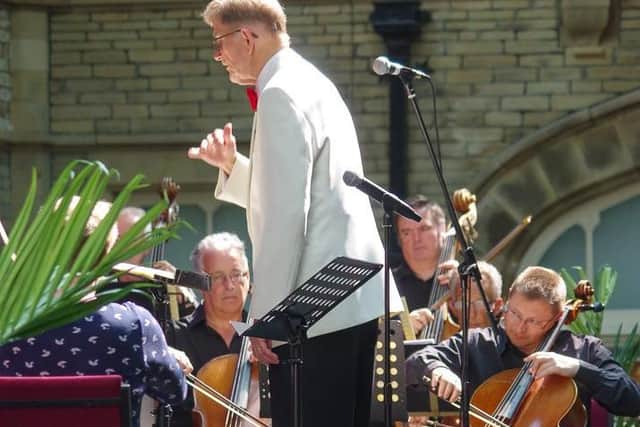Audience savour feast of music from Morecambe Promenade Concert Orchestra
and live on Freeview channel 276
n a somewhat gloomy January day, the Platform venue at Morecambe was once again packed with a full audience eager to listen to the Promenade Concert Orchestra’s 13th annual feast of European music - modelled on the popular Vienna Philharmonic Orchestra’s famous series of New Year concerts.
Conductor Howard Rogerson had once again used his inventiveness to vary the Viennese concert programme’s standard format a little.
Advertisement
Hide AdAdvertisement
Hide AdAs a result, the ever-present Strauss family contributed only six items to the 14 pieces played this year, and the other works played included some very rarely performed compositions. All the various sections of the orchestra, and their principals, led in exemplary fashion by Julian Cann, relished the multiple challenges posed by the music.


They were accompanied in four contrasting numbers, two marches, a polka and a waltz, by Gail Johnstone’s Turning Point Theatre Arts dancers who, as in their previous appearances with the orchestra, displayed great poise, synchronicity and visual flair.
The opening half of the programme included a tuneful and well-orchestrated waltz by Johann Strauss I (Loreley-Rhein-Klange) and the Pizzicato Polka, by his sons Johann II and Josef. Two other well known polkas by the younger Johann were also performed.
Tribute was paid to three composers who had recently achieved notable anniversaries – von Suppe (b 1819) whose Tantalusqualen overture is one of those lively pieces of his that sometimes grace Viennese concerts; Berlioz (d 1869), whose hauntingly beautiful ball scene from Symphonie Fantastique fitted in well with the Viennese dance music numbers; and Beethoven (b1770) who spent most of his career in Vienna and whose exotic Turkish March (from Ruins of Athens) represented that city’s fascination with aspects of Ottoman culture. Ziehrer’s waltz Wiener Burger brought the first half to an elegant close. The second half opened with a run of four much lesser known but fine and fascinating compositions: Waldteufel’s polished Chantilly waltz opened with an effective brass chorale; there followed a jolly Prussian march by von Blon, and then an attractive waltz by Lincke; finally, Czibulka’s idyll Waldesflustern, which included some splendid strings, woodwind and horns.
Advertisement
Hide AdAdvertisement
Hide AdThe concert ended traditionally, and remarkably promptly, with the Blue Danube waltz and the Radetzky march, by Johann Strauss junior and senior respectively.
Two more concerts in March and May remain in the present season.